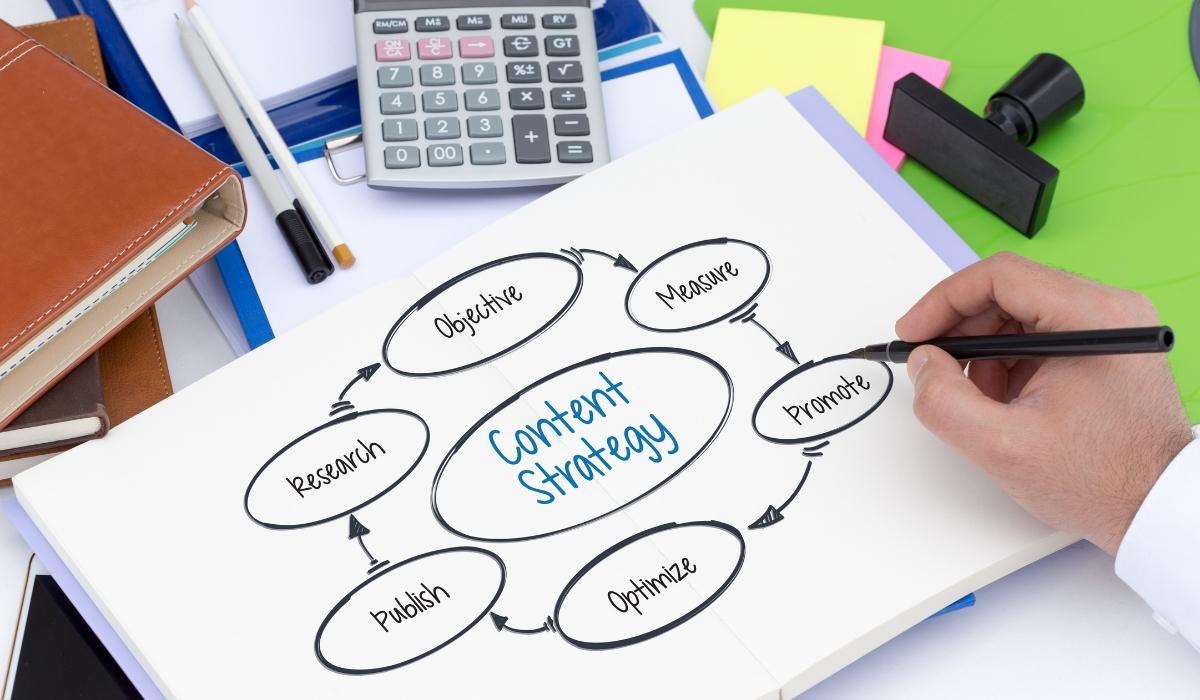For years, marketers clung to the phrase “Content is king” as the north star of digital strategy.
The premise was straightforward: success will ensue if your material is valuable.However, the facts of 2025 paint a different picture. To rank, convert, or retain, high-quality content is insufficient on its own.
Why?
To rank, convert, or retain, high-quality content is insufficient on its own. And what’s right is content that satisfies user intent.
Let’s examine the reasons for the rise of user intent, how it permanently alters SEO, and how you may adapt to it.
The Fall of the Content-First Mindset
There was a time when keyword stuffing and sheer content volume could push a website to the top of search engine results.
The longer your article, the better. The more keywords you sprinkled, the more relevant you seemed.
But this model ignored something fundamental: the human on the other side of the screen.
Users don’t want 2,000 words for the sake of it. They don’t care how clever your sentences are if they can’t get an answer quickly.
They want answers, clarity, value, and relevance—not just content.
These days, only information that responds to the searcher’s intent—not just what they typed—performs well.
What Is User Intent?
User intent refers to the reason behind a search query.It is the objective or intended result of the user’s search engine query.
One of these four intent kinds can be applied to any keyword a person types:
Informational Intent
They’re looking to learn something.
Example: “What is AI SEO?”
Navigational Intent
They wish to visit a particular page or website.
Example: “Topline Media Group homepage”
Commercial Intent
They’re comparing options before making a decision.
Example: “Best email marketing tools 2025”
Transactional Intent
They’re ready to take action—buy, download, sign up.
Example: “Buy iPhone 15 Pro Max online”
Your job isn’t just to rank for the keyword. Your job is to understand the intent behind it—and fulfill it completely.
Why Google Rewards Intent-Based Content
Google has one job: serve the user the most helpful result possible.
Behavioral indications including time on page, dwell time, bounce rate, and click-through rate are now given priority in its algorithms.
If users consistently click your page and quickly return to the search results, Google sees that as a sign of dissatisfaction—and drops your ranking.
Nonetheless, Google favors pages that satisfy the searcher’s intent by satisfying their requirements in terms of depth, substance, and presentation. Simple.
Because of this, even the most beautiful content is increasingly overshadowed by user intent SEO.
How to Identify User Intent for a Keyword

Understanding searcher psychology is an art—and a science. Here’s how you decode it:
Analyze Search Engine Results Pages (SERPs)
Search your target keyword and observe the results. Are most of them:
- Blog posts or listicles? (Informational)
- Comparison reviews? (Commercial)
- Product pages or pricing? (Transactional)
Google’s first page tells you what kind of content users want. Don’t guess—model your content accordingly.
Look at Search Suggestions and People Also Ask Boxes
These features offer insight into related questions or sub-intents that users care about. Include them as H2s or H3s in your blog.
Study Top-Ranking Formats
Is everyone using videos, infographics, or tables? If so, users likely prefer that structure. Replicate the format while refining it to compete.
Content Structure Must Match Intent
Knowing the intent is step one. Delivering on it is step two.
Here’s how to tailor your content to each intent type:
Informational Intent
- Use clear, concise language
- Provide quick answers up top, followed by details
- Include visuals or diagrams for complex topics
- Structure content with FAQs and subheadings
Commercial Intent
- Use comparison tables, pros/cons, and user reviews
- Address pricing, features, and differentiators
- Add trust signals like testimonials or case studies
Transactional Intent
- Streamline design for action—CTAs above the fold
- Keep copy benefit-driven and concise
- Minimize distractions; focus on conversion
UX is Now Part of SEO
Google doesn’t separate content from experience. Your user experience (UX) has a direct effect on how well your content ranks in 2025.
- Fast loading time reduces bounce and improves rankings
- Mobile responsiveness ensures accessibility across devices
- Logical structure keeps users engaged and scrolling
- Clutter-free layout improves comprehension and action
A well-structured article that loads quickly and presents content clearly will always outperform a beautiful but confusing page.
Repurpose Old Content Around Intent
If you’ve been publishing content for a while, chances are you already have assets that can be re-optimized.
Here’s how:
- Use analytics to find pages with traffic but poor engagement
- Identify misaligned intent—was the post targeting commercial queries but written as a general blog?
- Update the structure, keywords, visuals, and CTAs to match intent
- Add missing subtopics or FAQs that users are searching for
Often, small changes aligned with intent can double traffic or triple conversions without writing new content.
Intent SEO Is Not About Abandoning Keywords
Let’s be clear—keywords still matter in 2025. But their role has evolved.Targeting high-volume keywords was the aim of the previous SEO playbook. Rank high, drive traffic, job done.
That mindset no longer works.
Today, keywords are just the entry point. Think of them as doors. When users search, they’re knocking on those doors.
What matters is what’s behind the door—the user intent. Your content must deliver exactly what they expect when they step inside.
It’s not enough to rank anymore. You need to understand why someone searched a term and what outcome they’re hoping for. Two people can search the same phrase with totally different goals.
So now, treat keywords as signals, not targets. For each keyword, ask:
- What’s the search volume?
- How competitive is it?
- What’s the intent behind it?
- Where is the user in their buying journey?
When you match content to intent, rankings and results follow naturally.
Engagement Metrics Are Your True SEO Report Card
To assess whether your intent-optimized content is working, monitor these metrics:
- Click-Through Rate (CTR): Is your meta title/description compelling?
- Bounce Rate: Are users leaving too quickly?
- Time on Page: Are they reading your full content?
- Scroll Depth: Are they reaching the CTA or conclusion?
- Conversions: Are they taking the action your content suggests?
If any of these are underperforming, revisit intent alignment. Chances are, you’re either not fulfilling the need or you’re fulfilling the wrong one.
A Real-World Comparison: Old vs. New SEO
Let’s say you write an article on “how to choose a credit card.”
Old SEO Mindset:
- Use the keyword 10 times
- Write a long piece with general advice
- Add a few links, maybe a CTA at the bottom
Intent SEO Approach:
- Identify the user wants to compare types of credit cards based on use (travel, cashback, student)
- Open with a short intro explaining how this article helps
- Include comparison tables, user case examples, benefits, and fine-print details
- Use clear headings like “Best for Low Interest,” “Best for Cashback,” etc.
- Add a CTA: “Compare Top Cards Now” with a quick tool
The Future of SEO Belongs to Intent
As AI evolves and users expect more personalization, Google will continue to refine how it measures content quality.
One thing is certain: user satisfaction will be the single most important metric.
If your page satisfies intent better than your competitors, you’ll win the traffic, loyalty, and conversions—regardless of your domain authority or backlink count.
Conclusion: Intent Is the New King
Today, success isn’t about how much content you create, but how well it answers the user’s specific questions and needs.
Winning brands ask, “Why is this person searching?” and “What do they expect to see?”—then deliver even better, clearer, and more relevant information.
By focusing on user purpose, they satisfy real people and align with Google’s goal of prioritizing user satisfaction.
In a crowded digital world, this approach helps brands stand out. In 2025 and beyond, user intent isn’t just part of SEO—it is SEO.
FAQ’s
Why isn’t high-quality content enough to rank anymore?
Because Google now focuses on whether your content truly answers the real question behind a user’s search—not just if it’s well-written. Relevance beats length or language, and satisfying user intent ultimately drives rankings.
How do I know what a user’s intent is behind a keyword?
Check what’s ranking on page one for that keyword. Are they blogs, product pages, or reviews? This gives a strong clue about what users want and expect when they search.
Can one piece of content serve multiple intents?
Rarely. Mixing intents usually confuses users and weakens your message. It’s better to create focused content for each intent to drive better engagement, satisfaction, and conversions.
Do keywords still matter in intent-driven SEO?
Yes, but they’re just the start. The real goal is to fulfill the why behind those keywords—not just use them repeatedly—but provide meaningful, relevant answers aligned with user needs.
How do I update old content for user intent?
Revisit the content’s structure, rewrite to match the right intent, and add missing sections based on current search behavior, common questions, or FAQs to keep it fresh and useful.



